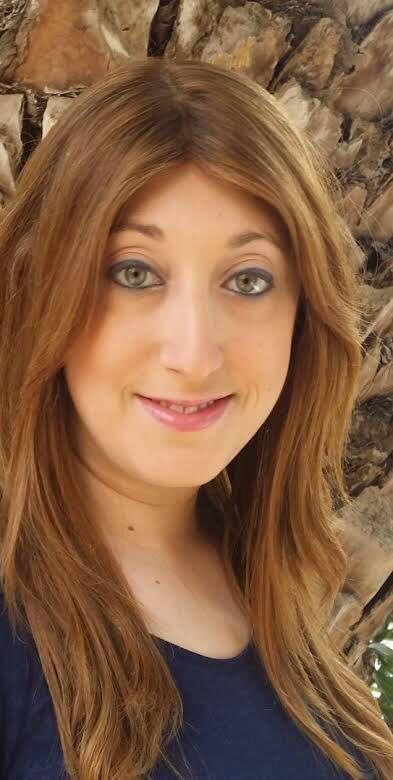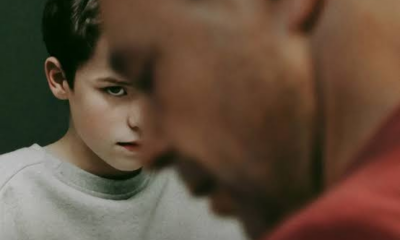
Community

How to stop the scourge of child sexual abuse
Child sexual abuse is a nightmare and it’s easy to think it will never happen to our kids and that it’s not something we need to address with them. But one in five children experience sexual abuse before the age of 18. This statistic stretches across all communities. Furthermore, 85% to 90% of abusers are people that the abused children know well.
This is according to Shana Aaronson of Magen Israel, a registered non-profit organisation in Israel dedicated to dealing with child sexual abuse comprehensively. She was speaking at an online workshop hosted by Koleinu SA on preventing, recognising, and responding to sexual abuse.
“These statistics are from research in Israel conducted across all communities, and in other Western countries it’s the same. The statistics are also prevalent in Orthodox Jewish communities,” Aaronson said.
She said sexual abuse was much more about power and manipulation than sex. Sexual abuse is simply the methodology that the abuser uses to exert control. “Saying sexual abuse is about sex is like saying alcoholism is about thirst.”
Sexual abuse often isn’t rape. “It can be molestation which is other sexual touching, exposing children to pornography, and other sexual acts.” And, abuse within families is more common than once thought.
She said they divide symptoms of abuse into yellow, orange, and red flags. Yellow flags would be bed wetting, moodiness, aggression, changes in eating or sleeping – anything that shows the child’s equilibrium has been upset. But these symptoms can also arise from being bullied at school and other emotional events. So it’s important not to assume your child is being abused if they, for example, wet the bed. But do investigate if your child displays such symptoms.
An orange flag is excessive touching of genitalia. This is complicated because it’s a normal part of development. However when it becomes obsessive, interferes with life, or simply inappropriate, parents should speak to a professional. In all things, Aaronson advises parents to trust their gut instincts. So if something seems “off”, find out why.
Red flags are marks or injuries on the body, or drawing and acting out sexual acts. “It’s a red flag because they wouldn’t know about that unless someone exposed them to it.”
However children often don’t tell. “On average it takes 10 to 26 years to disclose abuse,” said Aaronson. There are many reasons why. The abuser may threaten violence towards them or their family, or the child may feel confused because sexual abuse isn’t always violent and could even feel good, and the child doesn’t know what to do with that.
Often the abuser will “turn the child into the bad guy. They will say something like, ‘It’s your fault – I’m only doing this because you’re so pretty.’ Or they will allow the child to do something that the child isn’t normally allowed to do so they will think that they can’t tell their parents. The abuser would have also made them feel ‘equal’ because they both broke ‘rules’.”
Sometimes kids enjoy the special attention the abuser gives them. They then believe it’s their fault, because they accepted a gift or wanted the attention. In Jewish homes, kids may feel that it’s loshen hora to tell, or that their parents wouldn’t understand because they are tznius (modest).
Aaronson said grooming doesn’t just target the child – it targets everyone in the environment. It’s about gaining the trust of the child’s parents and community. “We call it the halo effect – the person will often appear perfect. This is by design. It’s difficult to see, except in hindsight.”
The first stage of grooming is when an abuser identifies their victim. They will often choose a child in a busy home, with lots going on. For example, the grandparents have moved in and need more care, or there’s a new baby. It’s not the fault of the parents, but it means the child is vulnerable.
They then “gain trust and fulfil needs”. They may offer to do lifts, help with homework, etcetera. “They identify the need, and fill it.” The difference between someone doing a good deed and a sexual predator is that an abuser will frequently offer favours that gives them access to children. Or, they will involve the child in the errand when it’s not needed. For example, shopping for groceries and taking the child along.
After they have gained trust, they isolate the child. They regularly invite kids to be with them. This is especially a red flag if there’s a pattern. The child may also be isolated physically – for example, a tutor closing the door.
After that, the perpetrator will abuse. Once the abuse is established, they will maintain it by regularly abusing and ensuring the child doesn’t disclose it.
How do we identify grooming? “If they are asking for time alone on a consistent basis and isolating the child for no reason; if they’re frequently offering favours that give them access to children; if they’re making parents feel bad or stupid for setting limits or asking questions – these are all red flags. Physical touch like excessive tickling, gifts, and treats, allowing a child to break a rule, offering babysitting or lessons for free when it’s unexpected are also signs.”
Another sign is an adult who is always around kids. Aaronson said kids instinctively know that adults want to be around other adults. She tells of a case when kids kept saying a 22-year-old was “weird” for hanging out with them, and he turned out to be an abuser.
To prevent all this, parents need to minimise opportunities for perpetrators. This means knowing where your kids are and who they are with. It’s about checking in when they are with friends, but also ensuring that kids have privacy in the bathroom. On the internet, parents also need to “check in” as if the child is in a room with others. Having an awareness of kids at family gatherings, and minimising one-on-one interaction with adults is needed. Relying on intuition is crucial.
“Abuse thrives when people feel too awkward to ask questions. Be respectful, but ask if your instinct tells you to,” Aaronson said.
Talk to children in a calm way. Discussing theoretical scenarios is a great way to do it. Aaronson told her kids this hypothetical story: “A boy [in Israel] was home alone with his friend and his mom gave him money to go to the shop and buy dinner. His friend suggested he buy sweets instead. The boy did so, and felt really sick. But he didn’t want to tell his parents because he would get both himself and his friend in trouble. But he eventually knew he needed to tell his parents, so he did.”
This story doesn’t talk about anything sexual, but it addresses all the most important aspects of abuse. Children can discuss how and why the child needed to tell their parent, even if the friend (i.e. the abuser) would also get in trouble.
Parents can explain that a “good secret” has a time limit and limited people you can’t tell. For example, “We’re having a surprise birthday party for dad next week, so don’t tell him until then.” But if a child is ever told that “you can’t tell this to anyone, ever”, then they must come to you, and “no secret will ever make us love you less”.
Aaronson suggests using opportunities to make the discussion feel natural. For example, talking about our bodies is easier when the kids are in the bath than at the dinner table. She says teaching children euphemisms for private parts isn’t recommended, although some cultural words are acceptable if others would know what it means. This is to ensure that they can describe the abuse if needed.
Finally, In Jewish communities, “The mitzvah of tznius is a great springboard to talk about bodies and how everybody deserves respect. Rather than feeling we cannot have these conversations, we’re teaching how to be tznius in the best way possible,” Aaronson said. “Embrace it as part of the conversation.”










